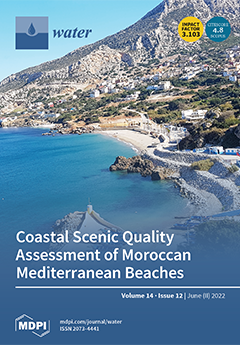Various disputes exist regarding the critical shear stress (τ
c) of rill erosion determined by linear regression. Alternatively, some researchers have attempted to measure critical shear stress (τ
o) of rill erosion by observing the start of soil particle detachment and
[...] Read more.
Various disputes exist regarding the critical shear stress (τ
c) of rill erosion determined by linear regression. Alternatively, some researchers have attempted to measure critical shear stress (τ
o) of rill erosion by observing the start of soil particle detachment and showed promising results. However, few studies have been conducted to evaluate the reliability of the method determining τ
o. Thus, this study was conducted to identify the reliability of the method determining τ
o by comparing the values of τ
c and τ
o and their relationships with rill erodibility (K
r) and influencing factors, using 360 disturbed soil samples (standing for the freshly tilled condition) from six sampling sites along a 330 km transect in the Loess Plateau. Results indicated that the mean τ
c was 1.90 times greater than that of τ
o. No significant relationship was found between τ
c and K
r. An inverse changing trend between K
r and τ
o was observed from Yijun to Zizhou, while both K
r and τ
o exhibited increasing trends from Zizhou to Yulin. The τ
o of six sampling sites all demonstrated increasing trends with slope gradient (S), which contradicted the statement of the WEPP model that τ
c was independent of S. The relationships between τ
c and the measured soil properties were poor, whereas the τ
o increased exponentially with soil organic matter. Generally, τ
o did not present significantly better results than τ
c; the reliability of τ
o also showed some uncertainties, such as the subjective judgment of the beginning detachment of soil particles. This result has great importance for deepening our understanding of the rill erosion mechanism.
Full article





